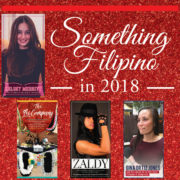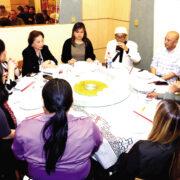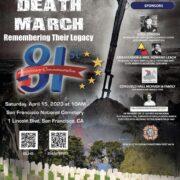AS we usher in 2019, the Asian Journal editorial team dedicates the first SF Magazine cover of the year as a reflection on the stories that we covered in 2018.
Each week, the SF Magazine publishes long-form stories of Filipino-Americans who continue to break barriers in their respective career fields, as well as highlighting the Fil-Am experience living in America and the social issues we face.
In the 52 covers we’ve published last year, we covered a breadth of topics, such as the importance of Filipino nurses to the U.S. medical industry, the need for Filipino families to support children in the foster system, long-distance relationships during Valentine’s Day and Christmas, and why we need to talk about mental health as a Fil-Am community. Along the way, we observed annual celebrations, from Philippine Independence Day to Fil-Am History Month.
Our fellow editors and writers sat down with Fil-Am Pulitzer Prize winners, elected officials, Broadway stars, entrepreneurs, philanthropists, and more. It’s always a difficult process to narrow down a whole year’s worth of stories into a succinct list, but we hope that you take a look back at these stories and continue to share them.
*To read these selected features & other stories in their entirety, please visit the Something Filipino Magazine archive.

What’s next for Kelsey Merritt, the first Filipina model in the Victoria’s Secret Fashion Show (By Momar G. Visaya)
Kelsey Merritt — who was born and raised in the Philippines — made history on November 8 when she became the first Filipina woman to walk in the Victoria’s Secret Fashion Show, an annual spectacular event that highlights some of the best and well-known fashion models in the industry including stalwarts such as Adriana Lima, Gigi Hadid, and Kendall Jenner among others.
“I am not exaggerating when I say that this is literally the hardest job you can get in the world. It was so hard that there has never been a Filipino in it. I can’t explain how much hard work I put in on this,” she said in her interview with the Asian Journal.
Meet Fil-Am designer Zaldy, costume designer for Cirque du Soleil’s “Volta” and “RuPaul’s Drag Race” (By Momar G. Visaya)

For over a decade now, renowned designer Zaldy Goco has straddled the twin genres of fashion and costume design to create unforgettable, timeless, and beautifully crafted clothing. A decade earlier, he was moving seamlessly between music and fashion, creating a tapestry that could very well be a major accent to his finale dress. That is if we look at his life’s trajectory as a runway fashion show.
While making a name and creating a fierce brand, Zaldy (according to the New York Times, he dropped his last name when he was in high school) has also become a two-time Emmy Award-winning costume designer through his work on “RuPaul’s Drag Race.”
He has also been actively collaborating with Cirque du Soleil and the partnership has been growing through the years.
Zaldy launched his namesake collection in 2002 and has since imagined stage looks for many of the most celebrated and diverse performers of this era: Michael Jackson, Madonna, Beyonce, Lady Gaga, Mary J. Blige, RuPaul, Katy Perry, Gwen Stefani and Britney Spears among them.
From 2004 to 2007, Zaldy was the head designer of Gwen Stefani’s highly successful L.A.M.B. collection, which fused streetwear with elements of the singer’s glam-punk look.
From bean to bar: Fil-Am chocolatier Hernan Lauber finds joy in native Philippine cacao (By Rae Ann Varona)

To Fil-Am chocolatier Hernan Lauber, the Philippines is what he describes as the “Napa Valley of cacao” — a big claim, given that the country may not initially be one that comes to mind when talking about the bean.
“The Philippines currently produces less than one-percent of the world’s supply of cacao but it’s been a part of Filipino history for as long as it’s been part of European history,” said Lauber, the chocolatier behind the new bean-to-bar chocolate brand, “Oodaalolly”.
Born in the Philippines, Lauber spent the first two years of his life in the country and grew up in other parts of the world like Geneva, Toronto, and New York, before moving outside Philadelphia where he spent the bulk of his middle and high school years. He then went on to get a degree in mechanical engineering, before getting his MBA in international business.
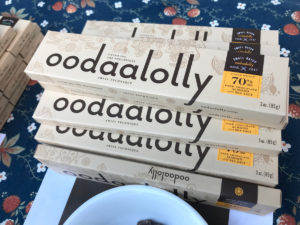
By the early 2000s, Lauber decided to try his hand at the chocolate business and create his own chocolate company that got rid of the melting of imported bulk chocolate, and focused more on bean-to-bar.
One thing that distinguishes oodaalolly from other chocolate makers is that they source their own cacao beans directly from the Philippines without using any distributors, he said. Lauber said he spent a year working on the process before launching their original collection of bars in December of 2017.
Currently, the maker has three bars: 60-percent dark milk, 70-percent dark chocolate, and 70-percent dark almond and sea salt. All bars are single roast, single origin, and use 100-percent Filipino cacao.
Globetrotting with Filipino-French entrepreneur’s lifestyle brand Oneculture (By Christina M. Oriel)

In September, the Asian Journal featured Anthony Alvarez, a Filipino-French entrepreneur living in Paris who started his own lifestyle menswear brand Oneculture, featuring pieces inspired by travels and global influences. So far the collections have included Manila, Fez, Morocco and Tokyo.
“I really wanted to convey that message through the clothes, promoting culture and diversity and promoting travel without any cultural barriers,” Alvarez said. “This was also during a time when a lot of people were focusing on barriers, such as Brexit or Donald Trump being elected president of the United States. That’s the political side to it. So that’s how I got the name Oneculture.”
One of the statement pieces during the Manila collection was a rendition of the men’s barong (a formal shirt made from piña considered the national costume of the Philippines) in the color black and using a more comfortable, sporty fabric. He incorporated the eucalyptus tree that is found in the Philippines and put that print in the inside layer of the clothes.
“I grew up in a household that was very Filipino,” he said. “It is a very important part of my identity so I [started] the journey of Oneculture in Manila.
The Lei Company: Community building and cultural preservation through entrepreneurship (By Malou Liwanag-Bledsoe)
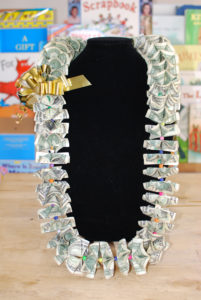
Filipino-American Tiffany Rose Na’puti Lacsado saw an opportunity not only to continue the preservation and evolution of the lei, but also to get people in the community to uplift the quality of their lives economically through The Lei Company (TLC). Her long career in public health opened her eyes and pointed her to the direction on how to create job opportunities for the clients she used to help.
“At some point I had an ‘aha!’ moment where I realized that the biggest barrier to health for all of my clients across the spectrum was their inability to participate in the economy. For different reasons their job prospects were slim to nil or as in the case of my WIC they worked in an environment and under circumstances that hindered their ability to make healthy choices,” Lacsado said.
In June 2017, Lacsado founded The Lei Company (TLC) Cooperative, Inc., a California worker-owned corporation based in Oakland.By June 2018 she was selling her products across the continental United States and wanted to expand the marketing, sales and distribution capacity of her cooperative, develop products for the death care and wedding industries, and start to cultivate her commercial lei garden. Last quarter of 2018 she turned to Crowdfund Mainstreet to craft her new securities offering and launched a Direct Public Offering via an investment crowdfunding campaign.
Gina Ortiz Jones and her endeavor to become the first Filipina in Congress (By Momar G. Visaya)
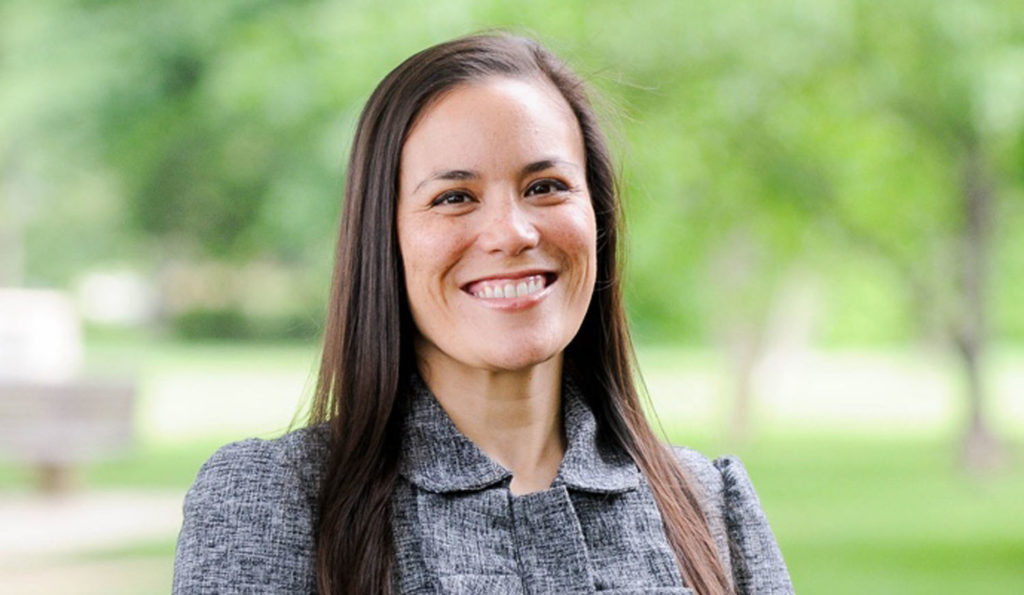
The 2018 midterm election was historic in many ways, including the number of women and Filipinos who vied for positions across the country. We saw Fil-Am TJ Cox be elected to California’s 21st congressional district, as Jennifer Zimmerman (Florida – District 1) and Cristina Osmeña (Calif.-14) also ran in competitive races, but unfortunately did not push through.
In Texas, Gina Ortiz Jones went up against incumbent, two-term Representative Will Hurd, in one of the most tightly-contested and closely-watched battles in the country. She endeavored to make history as the first Filipina-American in Congress and the first openly gay, first Iraq War veteran and first woman House representative from the 23rd District of Texas. While she didn’t win, the momentum and name she built for herself as a political leader may be a signal that we’ll be seeing more of her soon.
“I would be honored to be the first but it is important that I am not going to be the last because I am only here because of the opportunity my community, my country afforded for me. This is very much about protecting those opportunities for others that are just as talented, just as hungry and need a little bit of help,” Ortiz Jones told the Asian Journal.
“Dear America: Notes of an Undocumented Citizen”: The raw, unapologetic candor of Jose Antonio Vargas (By Klarize Medenilla)
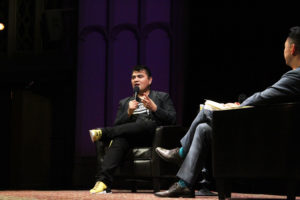
Pulitzer Prize winner and immigration advocate Jose Antonio Vargas published his memoir, “Dear America: Notes of an Undocumented Citizen,” to much praise in September 2018. “Dear America” delivers a perspective that has endured institutionalized and socialized racism and internal struggles and identity crises as an undocumented gay immigrant of color.
In a chapter called “Filipinos,” he writes, “Filipinos fit everywhere and nowhere at all,” and despite the rich presence of Filipinos in American history, the struggle of Filipinos in America to feel at home and to feel a sense of belonging is ubiquitous. In many ways, “Dear America” is an introductory call to Filipinos in America — undocumented and otherwise — to stake a claim to the Filipino-American identity and understanding how we got here.
“Padayon”: Celebrating Parangal Dance Company’s 10th year (By Malou Liwanag-Bledsoe)

With its continued mission to promote the Filipino heritage through their performance and presence in the Filipino-American community, Parangal Dance Company has come a long way. In October 2018, the dance company celebrated a decade of aspiring to inspire with an anniversary tribute show, “Padayon” at the Scottish Rite Masonic Center in San Francisco.
Parangal Founder Eric Solano shared that the context of “Padayon” is “to move forward and to persist,” adding that the concept of their 10th-anniversary show is to create awareness about the plight of indigenous people in the Philippines. For him, it is imperative that they continue to share the teachings of culture bearers that have taught us their culture and traditions.
Parangal was founded in 2008 under the direction of Solano. Today, the group boasts about 60 active members and has performed not only in the United States and the Philippines, but to other countries as well. However, international recognition is not the group’s greatest achievement according to Solano. For him, it is being able to share the message of solidarity.
“Advocacy and solidarity with indigenous groups in the Philippines and being able to share that,” said Solano. “I believe it is the advocacy that we have with the indigenous groups is one of [the] ways we engage and sustain new members and new dances/pieces we work on almost yearly to continue to know about our roots, discover the Philippines and its wealth people.”
Manny Mogato & Mariel Padilla: Getting to know the Filipino 2018 Pulitzer Prize winners (By Momar G. Visaya)

The Pulitzer Prize is the highest and most prestigious award in journalism, literature and music composition.
Earlier this year, Manny Mogato, 55, won the Pulitzer Prize for International Reporting, alongside his Reuters colleagues, Clare Baldwin and Andrew R.C. Marshall, for their relentless reporting that exposed the brutal killing campaign behind Philippines President Rodrigo Duterte’s war on drugs. With this feat, Mogato became the first Philippine-based journalist to do so after 75 years when Carlos P. Romulo won it way back in 1942.
Mariel Padilla, a 23-year-old graduate student of journalism at Columbia University, also won as she was part of the team at the Cincinnati Enquirer that covered the deadly opioid crisis in Cincinnati.
Concept artist Anthony Francisco on the Filipino influences in ‘Black Panther” & his contributions to the Marvel Cinematic Universe (By Christina M. Oriel)

“Black Panther” broke a handful of records, including being one of the top-grossing films in the United States, and was historic for its representation of minority actors and characters on the big screen. In addition to the influences of African heritage throughout “Black Panther,” the uniform for the Dora Milaje (Wakanda’s all-female special forces) was partially inspired by the Ifugao tribe in the Philippines — thanks to Fil-Am Anthony Francisco, senior visual development artist on Marvel Studio’s Visual Development team.
Francisco has worked on a handful of films, such as “Spider-Man” (2002), “Guardians of the Galaxy Vol. 2,” “Thor: Ragnarok” (Loki), “Ant-Man,” “Doctor Strange,” and “The Chronicles of Riddick,” “Ant-Man and the Wasp,” “Captain Marvel,” and “Avengers: Infinity War.”
“As a concept artist, the most important thing in design is to research. The more things you know, the more things you could remix into your design and know what’s been done and make sure you know how to blend different influences,” he said, adding that the final sketches for the Dora Milaje, were “75 percent African [primarily the Ndebele, Dinka and Maasai tribes], 10 percent samurai Japanese armor, 5 percent Filipino, 5 percent Native American and 5 percent Medieval armor — spin those tribal ideas and make it futuristic modern armor…but push it [to be] even more high-tech.”
RELATED STORIES:


